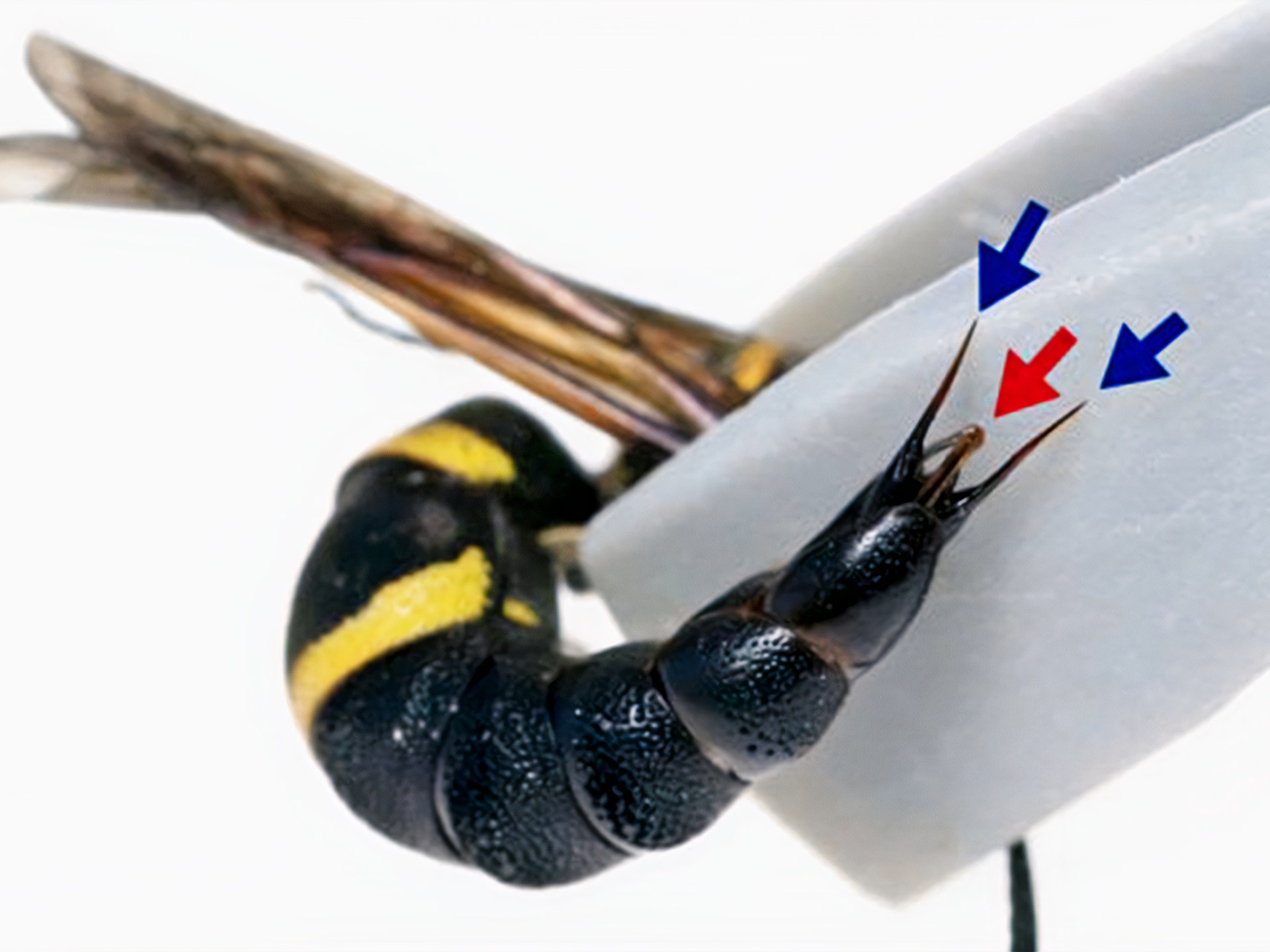The stings of female bees cause severe pain and sensitivity in humans, thanks to the use of their egg resources to inject venom into the sting site.
This mechanism is a well-known defense weapon for female bees, unlike their males. Male bees, lacking an egg supply, were thought to be harmless and unable to sting, thus avoiding predators and attackers by mimicking the females' coloration and behaviour.
This belief was refuted by a recent study published in the journal Current Biology, in which a Japanese research team revealed that male bees and wasps sting using their genitals when they feel threatened, and although their sting is devoid of poison, it is very painful and saves them from attacks by predators.
The defense mechanism of male bees was identified thanks to an accidental sting suffered by a researcher (Current Biology)
Discovery thanks to an accidental bite
For years, the genitalia of male insects has been repeatedly studied, but in terms of specific interactions between males and females, rather than predator-prey interactions.
In a few cases, scientists put forward the hypothesis that some male insects can sting using their genitals, but the scientific evidence confirming this hypothesis remained missing, until the research team led by Shinji Sugiura, from Kobe University, determined this defense mechanism. When a male bee, thanks to an accidental sting, prompted him to conduct several laboratory experiments.
The observation began when one of Sugiura's students, a co-author of the study who specializes in predator control mechanisms, was stung by a male bee. Then the researcher tried a similar sting, and because he thought the males were harmless, he was surprised by the severe sting pain.
Male bee defense mechanism against predators
As indicated in the press release posted on the university's website on December 20, the team conducted laboratory experiments, and designated tree frogs as the potential predator, and male bees as the prey.
Under laboratory conditions, the team noticed that more than a third of the tree frogs were unable to devour the male bees, as the latter stung the attacking frog's mouth and other parts of it with its genitals, so the frog ended up spitting out the male bees after being stung.
In the second step, the team exposed male bees after removing their reproductive organs to tree frogs, with the result that they ate them in a very short time.
Laboratory experiments revealed that while some prey species have specific defense systems against predators, others simply use parts of the body that exist for reasons other than defense to fend off danger, which is the case of male bees that use reproductive systems to escape from predators.
Male bees have effective thorns in their genitals that they use as a weapon to defend themselves (current biological)
survival instinct
The same study found that male bees have effective spines in their genitals that they use as a defense weapon so that they are not devoured by predators, such as tree frogs, which find strong resistance from them and are often unable to swallow them.
The two large thorns located on both sides of the reproductive system of male bees cause pain when stinging, and the research team has noticed that male bees do not penetrate females during mating and are not rejected by the latter, and therefore males use them when exposed to danger and attack by predators only.
This study sheds light on the importance of male genitalia as a defense mechanism against predators, regardless of their reproductive role, and provides a new perspective for understanding the ecological roles of male genitalia in animals. The research team also looks forward to revealing the extent to which similar defense mechanisms exist in other types of insects. .

